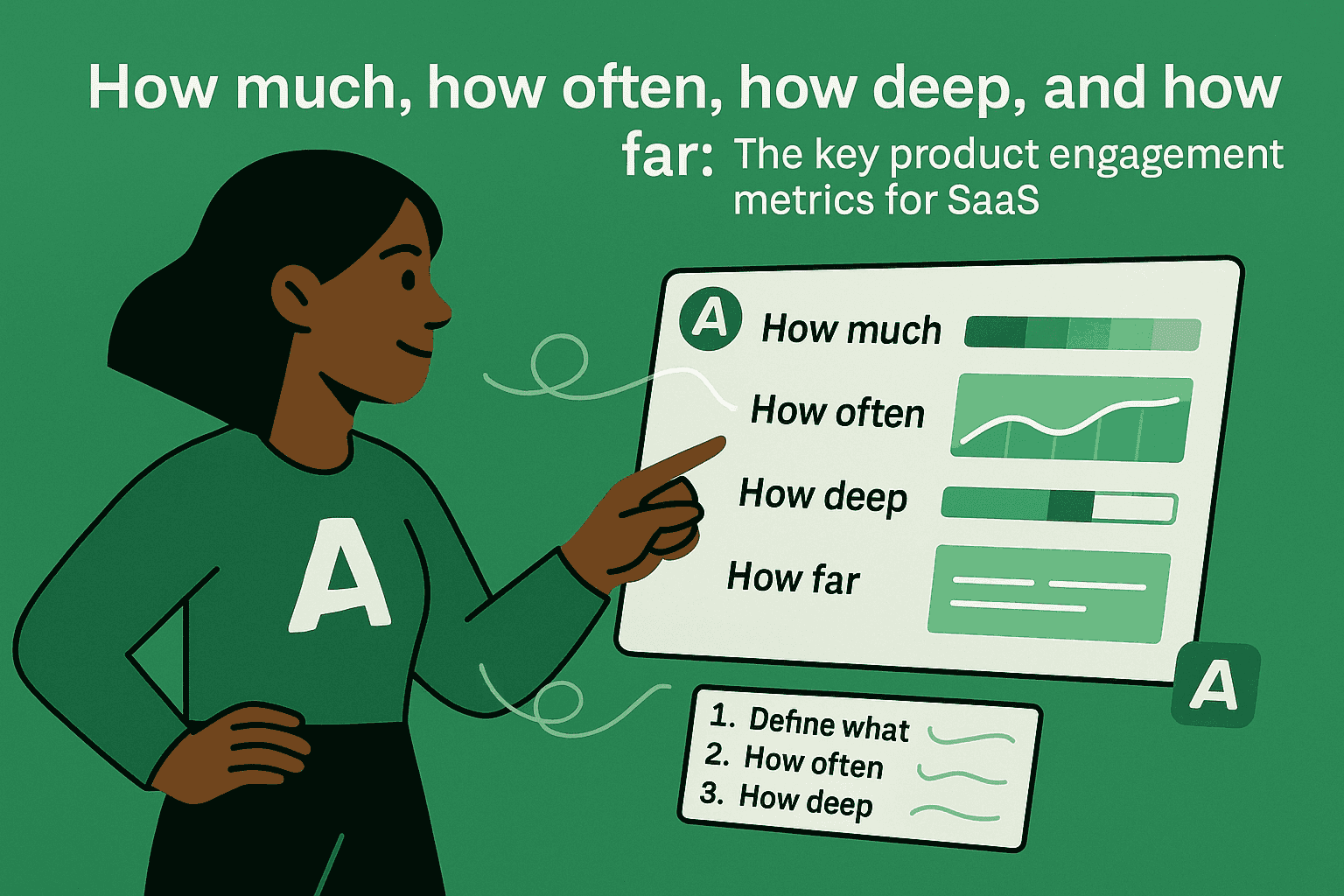Let's talk product engagement metrics. They might not be the most glamorous topic, but if you run a SaaS product, you need to understand them. You want to know if people are really using your product.
Whenever you set a metric, start with the question you want to answer. When it comes to product engagement, the big one is: Is anyone using my product?
Sure, you could count active users logging in daily, weekly or monthly. But that only tells part of the story. Real engagement is multi-dimensional. You need to ask more questions.
Four key questions to define good product engagement metrics
Here are the questions you should ask when measuring product engagement:
- How much are my users using my product?
- How often are they using my product?
- How deep is their feature usage? How many features do they use?
- How far along are they in getting value from the product?
Each question covers a different part of the engagement story. The answers fill in the details.
Four key product engagement metrics
Below are the main metrics to help you understand how users engage with your product. Think about these metrics both globally and at the individual user or account level.
A word about metrics
We prefer actionable metrics. Global trends are useful but not enough. Metrics that work for each user or account let you trigger useful actions in your teams.
With that in mind, here are our key engagement metrics:
Product Engagement Score (the How Much)
A product engagement score calculates how much a user or account uses your key features in a set time. It counts actions, ranks them and normalises them on a familiar scale, much like a credit score.
When every user or account has a weekly engagement score, you can spot power users, churn risks, and everyone in between. This score goes beyond simple logins to show how engaged they really are.
Frequency (the How Often)
Frequency tells you how often a user or account uses your product. Rather than just daily, weekly or monthly, it can show you the number of days in the last week that a user was active. For example, one account might be active on 5 of the last 7 days, while another only on 2 days.
Adoption Rate (the How Deep)
Adoption rate answers how deep feature usage is. Are users sticking to just one feature, or are they using multiple features?
Calculate it as the percentage of available features that a user or account uses. Track this over different time frames. A drop in recent adoption compared with all-time rates might mean users need more guidance or training.
Activation Rate (the How Far)
Activation rate shows how close a user or account is to getting value from your product. It measures the percentage of key actions completed. For instance, if there are 7 actions needed for activation, completing 2 might give you a 29% rate, while completing 5 would be about 71%.
This metric is essential for managing trial or new paid accounts and for designing onboarding.
Bonus: Three other key metrics
In addition to the core metrics, consider these extra measures to add context and boost actionability:
- How long has a user or account been using your product?
- When were they last active?
- How many of their users are active?
Tenure (the How Long)
Tenure tells you how long a user or account has used your product. Is it a new account (less than 30 days) or a mature one (over three years)?
Knowing tenure helps you decide if a new user needs extra help to reach value or if a mature account should explore more features.
Last Active (the When)
Knowing when a user or account was last active is key. If an account hasn't been seen for 15 days, it could be a concern. If it's over 30 days, that might signal a deeper issue.
Active User Percentage (the How Many)
Active user percentage is vital for SaaS companies selling to accounts, especially if you sell seat licences. It shows whether high usage is driven by one user or shared across a team. A drop in the percentage can be a warning sign, especially before renewals.



